Sonos Era 100 vs Sonos One: which smart speaker should you buy?
We've tested both new and old models, so which is the better buy for you?
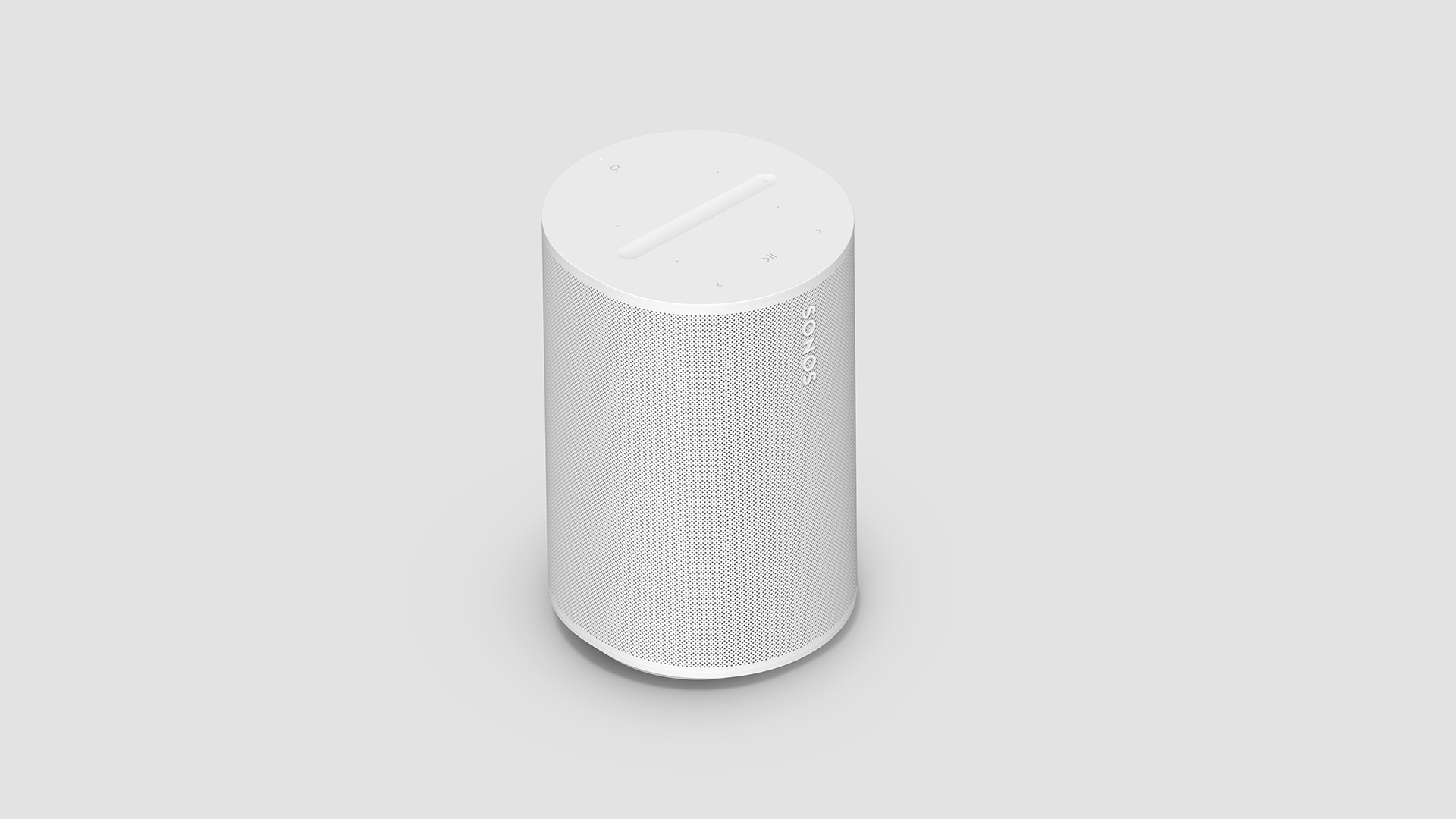
Bluetooth: 5.0
Connections: Wi-fi, AirPlay 2, Bluetooth, USB-C line-in
Dimensions: 18 x 12 x 13.05cm
Weight: 2.02kg
The Era is like the Sonos One for a new generation. It's more powerful, more capable thanks to its stereo sound, and has more versatile connections. If you can afford it, it's the ideal gateway speaker to the Sonos universe.
Pros
- Big, detailed sound
- Wi-fi streaming + Bluetooth
- Excellent app
Cons
- Voices could be more natural
- Pricier
- Adapter costs extra

Bluetooth: No
Connections: Wi-fi, AirPlay 2
Dimensions: 16 x 12 x 12cm
Weight: 1.85kg
With no Bluetooth, no physical connections and no stereo sound, you might struggle to see the One's relative appeal. Until you hear it and consider its price, that is. It might feel dated next to the Era 100, but it's still a very fine smart speaker.
Pros
- Unobtrusive design
- Sophisticated sound
- Cheaper price tag
Cons
- Soon to be discontinued
- No Bluetooth
- No line-in
Sonos has a new two-strong range of speakers, called Era. The flagship Era 300 sits below the Sonos Five as a spatial audio-focused speaker, but the cheaper Era 100 replaces the Sonos One at the more affordable end of Sonos' product range. Both are currently available and decent options depending on your needs and budgets.
So what's the difference between the Era 100 and the One? How much do both speakers cost? And should you opt for the new five-star model over the (also five-star) original? Having exhaustively tested both speakers and lived with both in recent months, we can confidently answer all these questions and more...
- Read our full Sonos Era 100 review and Sonos One review
Sonos Era 100 vs Sonos One: price
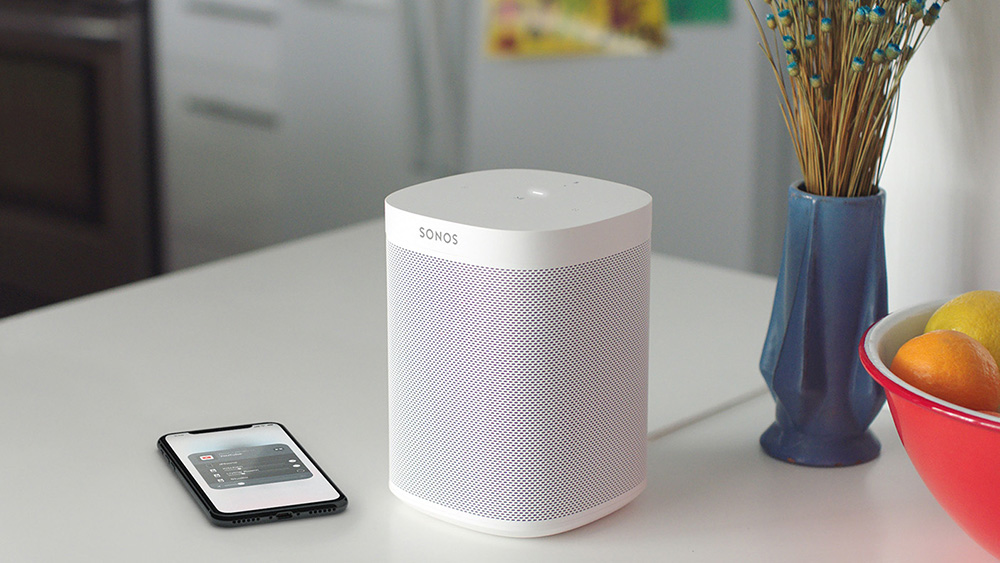
The Sonos One launched back in 2017, though the Gen 2 model currently available dates from 2019. Because the Era 100 will eventually replace the One, retailers are discounting the One to get rid of the final stock. At the time of writing, you can pick one up for as little as £149 on Amazon in the UK, for example. For reference, the Sonos One's RRP is £199 / $199 / AU$299.
The Sonos Era 100 is a fair bit pricier, launching at £249 / $249 / AU$399. How about a discount? You'll be lucky. Sonos kit is rarely discounted, especially when new. Still, your best bet to nab an Era 100 deal is during Black Friday and the January sales, where we could possibly see a discount of, we would guess, around 10 per cent.
You can find today's best online prices for both speakers just below.
**Winner: Sonos One**
Sonos Era 100 vs Sonos One: design

Considering the unique “cinched hourglass” design of the Sonos Era 300, the Era 100 looks a little unexciting. It has, however, moved on from the Sonos One. In fact, Sonos says that there isn’t a single bit of the old One in the new Era 100, so despite the aesthetic familiarities at first glance, you can indeed consider this a refresh.
The latest hi-fi, home cinema and tech news, reviews, buying advice and deals, direct to your inbox.
Gone is the One's rounded square design, in favour of a more oval shape. The Era 100 is a little bigger (about 2cm taller) and heavier than the One, though it's still compact enough for any shelf, desk or table (providing you have a plug socket nearby).
The change in shape isn't just to make it look different. The larger body accommodates some new drivers – the Era 100 now delivers stereo sound, whereas the One is just mono.
Inside are two angled tweeters with custom waveguides, alongside a woofer that’s 25 per cent bigger than before, all powered by their own Class D amplifier.
The Era 100 comes in a matte black or matte white finish, and the wraparound grille now stretches to the edges more than before for a seamless look. And like the Era 300, the 100 also has a new control panel on the top, complete with an enhanced volume slider that's recessed like a trough. In our five-star Era 100 review, we concluded that the design was "in keeping with Sonos’s clean, minimal design" and "built to a high standard".
The Sonos One looks very similar to the late Play:1 that it replaced in 2017, though its touch-sensitive top panel was the main departure. The wraparound grille helps it blend into its surroundings, though again, it looks a little dated when sat next to the Era 100 – hardly surprising given that the design is now six years old.
**Winner: Sonos Era 100**
Sonos Era 100 vs Sonos One: features
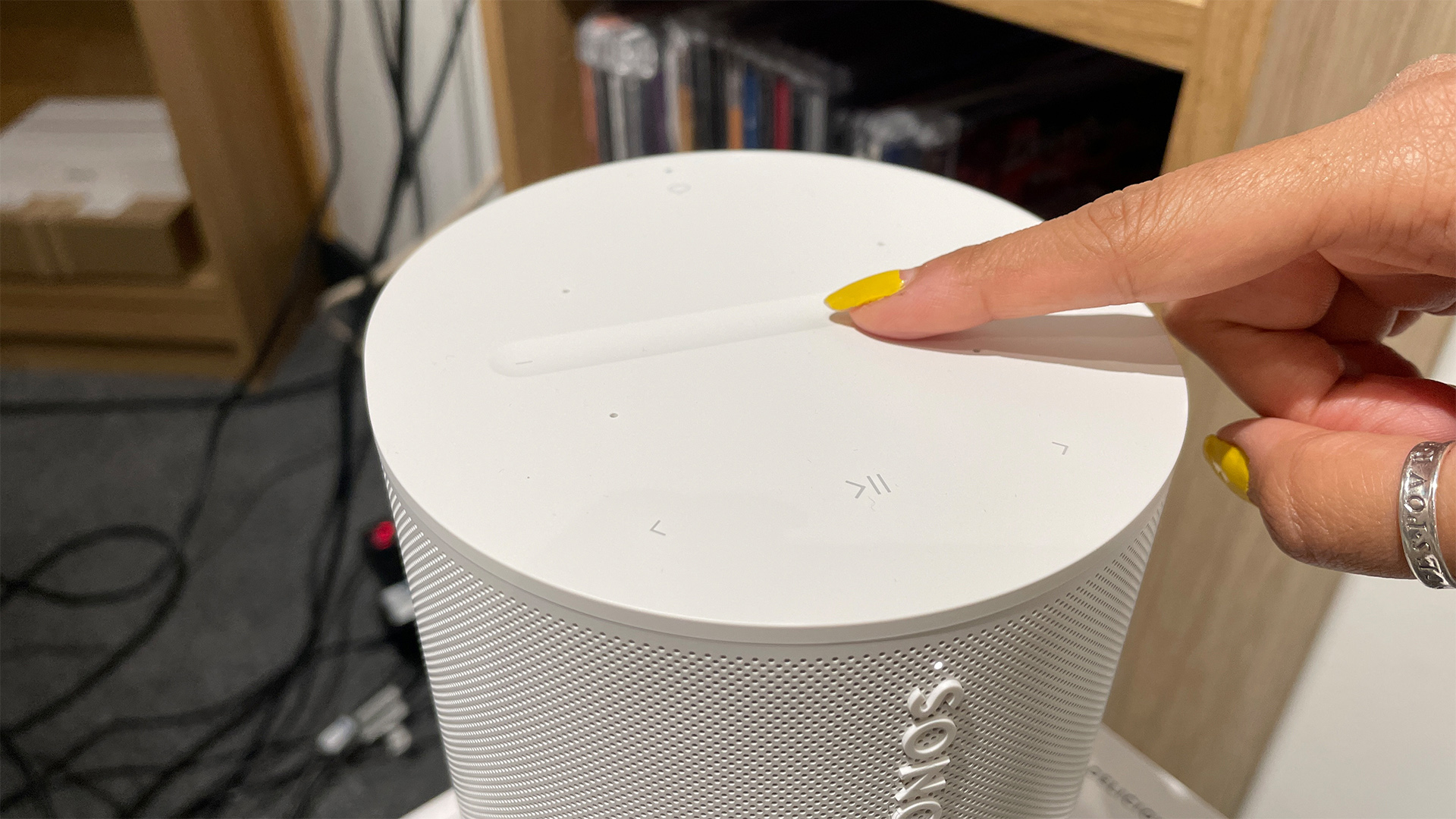
Unlike the Era 300, there's no spatial audio onboard the Era 100 – Sonos claims the speaker's smaller dimensions wouldn't do it justice – but it can play in stereo, as opposed to the Sonos One's mono.
The Era 100 offers both Bluetooth and a USB-C line-in – the Era speakers are Sonos' first to offer both features. The company has dabbled with these connections before – Bluetooth is found in its portable Roam and Move speakers; line-in comes on the flagship Sonos Five – but it has never offered both in one device before. (Note: you'll need a specific adapter and cable for wired connections, both sold separately; the adapter costs £19 / $19 / AU$35.) That makes the Era range more versatile than other Sonos speakers, not to mention the vast majority of those from Apple, Amazon et al.
Of course, the Era 100 also offers wi-fi for music streaming service and networked file playback, just like every other Sonos speaker. As far as connectivity goes, the Sonos One only offers this – there's no Bluetooth or line-in.
The Era 100 is more powerful than the Sonos One, too, and can pair with the Sonos Arc, Ray and Beam Gen 1 and Gen 2 soundbars to work as part of a home cinema set-up. You can also pair two Era 100 speakers to work as a stereo pair, though you can do this with two Sonos Ones too.
The Era 100 and Sonos One both support hi-res files up to 24-bit/48kHz from Qobuz and Amazon Music and be controlled by your voice or via the Sonos S2 app. Both speakers can also calibrate their sonic output using Trueplay for iOS (using an iOS device's integrated microphones), though the Era 100 can also use its own microphones to 'quick' tune itself for its current location, and this is supported on Android devices too.
Ultimately, from a features point of view, the Era 100 does everything the Sonos One does, with the addition of Bluetooth, line-in and more flexible TruePlay tuning.
**Winner: Sonos Era 100**
Sonos Era 100 vs Sonos One: sound
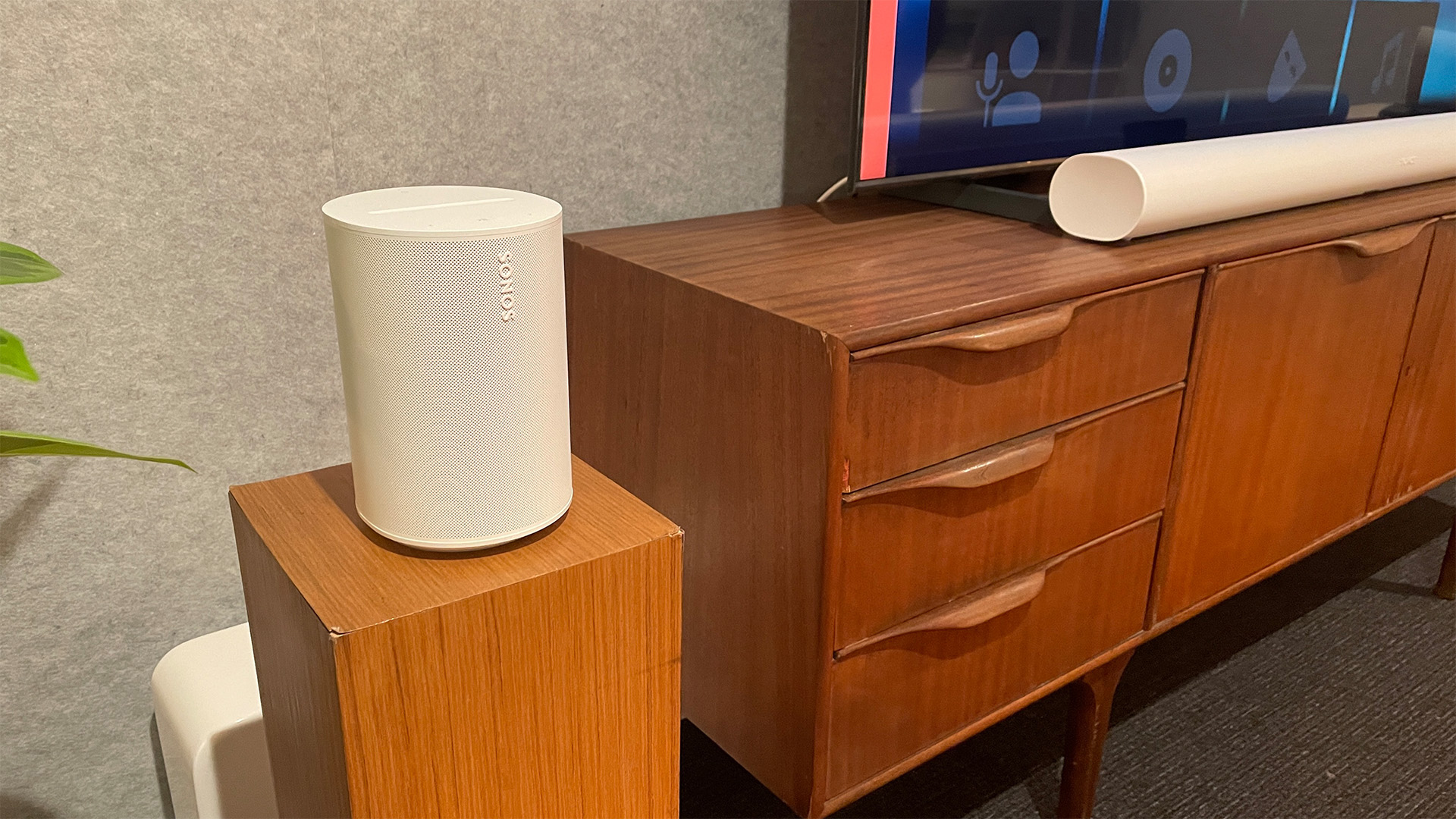
According to Ryan Moore, product manager at Sonos, the Era 100 is "from an acoustic standpoint, a complete refresh. There's not a single part of Sonos One in the Era 100."
We can believe it. The new speaker takes everything we liked about the Sonos One – crisp and detailed, spacious sound and deep bass – and cranks it up a dozen notches. It sounds so much bigger, more spacious, more insightful and deeper in those lower frequencies, while still being tonally balanced and retaining a great handle on timing and dynamics.
Its sound dispersion is very impressive – not a patch on the much bigger Era 300, of course, but still very expansive for a speaker this size. It’s an impressive step up in performance over the One, offering a new-found openness that allows instruments and voices space to breathe while still delivering each element as part and parcel of a musical whole.
Push the value too high and things start to get a bit coarse, but the sound is so room-filling that you shouldn't have to crank the volume. The same easygoing character remains when playing songs over Bluetooth, though it's a touch less crisp and clear than when streaming over wi-fi.
Does this mean you should immediately throw out your old Sonos One then? Not exactly. As we said in our Era 100 review, "while the Era 100 does admittedly improve on it in nearly every way, sonically, the Sonos One still does a great job of keeping music knitted together in a cohesive manner. It’s a smaller, less refined sound, but there’s a full-bodied richness to the voices that we really like. It’s the only element we wish Sonos had carried over to the Era 100...".
Indeed, the Sonos One has a very likeable sound that, for its price, is hard to beat. Its smaller soundstage can still be called spacious and is impressively organised, with vocals given plenty of breathing room, making them instantly engaging.
Even if you want to welcome the Era 100 into your home, we wouldn't necessarily get rid of your One; just enjoy it in a different room. It remains a nifty little speaker.
**Winner: Sonos Era 100**
Sonos Era 100 vs Sonos One: verdict
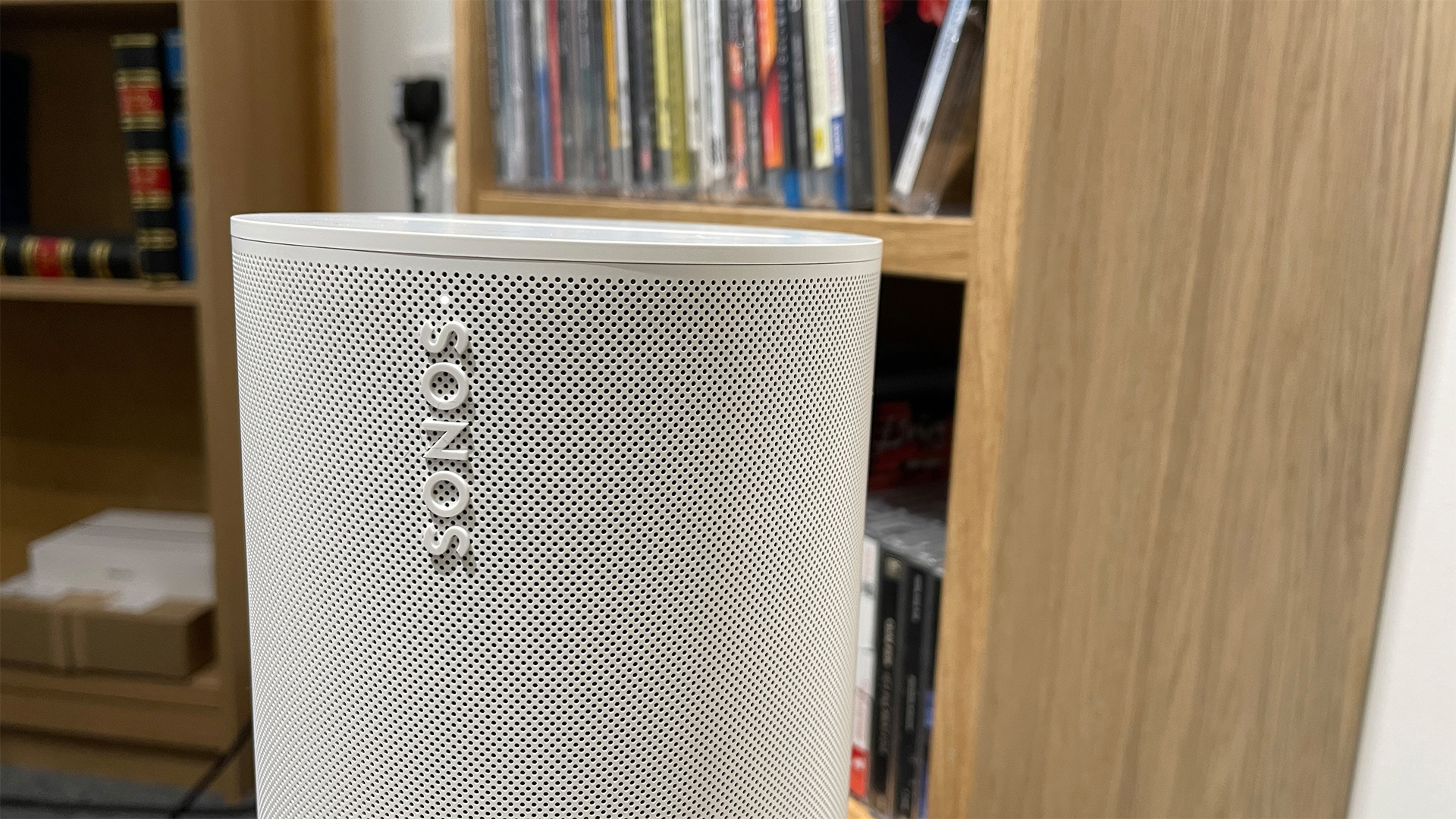
The Sonos One is still one of the finest little smart speakers you can buy. But with the Gen 2 model four years old now, a refresh was due and the Era 100 is exactly the update it needed – more power and greater connectivity but with the same winning footprint and user-friendliness. Plus a sound that's upgraded in nearly every way.
There's never been a more clear-cut answer to which speaker is better. But the One could certainly be deemed better value in its final days of shelf life. If you can live without the extra power and improved sound and Bluetooth/line-in connections, keep a look out – you could pick up the One for a bargain.
MORE:
Read our full Sonos Era 100 review and Sonos One review
These are the best smart speakers money can buy
Which Sonos speaker should you buy? Find out here
What's next for Sonos? All the rumours around Sonos wireless headphones
Joe has been writing about tech for 20 years, first on staff at T3 magazine, then in a freelance capacity for Stuff, The Sunday Times Travel Magazine (now defunct), Men's Health, GQ, The Mirror, Trusted Reviews, TechRadar and many more. His specialities include all things mobile, headphones and speakers that he can't justifying spending money on.
- Becky RobertsFreelance contributor

